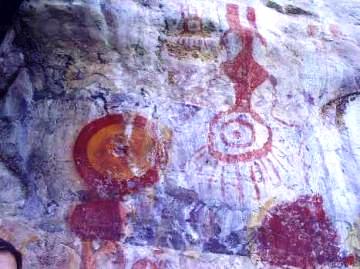The Dynamic Rainforest
Psalm 50:10-11
“For every beast of the forest [is] mine, [and] the cattle upon a thousand hills. I know all the fowls of the mountains: and the wild beasts of the field [are] mine.”
The environmental movement has rightfully shown concern about the South American rainforest. While it is true that the entire rainforest system is a delicately balanced harmony of thousands of subsystems, it is generally believed that it has taken millions of years to evolve. After all, each living thing forms part of the environment for other living things so that adaptation is a dynamic process seemingly taking much longer than might be imagined. This is why the rainforest is spoken of as being a fragile ecosystem.
 Anthropologist Anna Roosevelt of the Field Museum of Natural History, Chicago, has found, in Brazil, the oldest evidence of pottery in the Americas. The site where the pottery was found supported a large and industrious population. Roosevelt points out that the descendants of these ancient peoples conquered large parts of South and Central America. They cleared rainforests, built cities and spread their culture and industry. After the invasion of the Europeans in the 1500s, these cultures died out and the rainforests again took over. Thus, today’s rainforests are likely only a few hundred years old, meaning that it has not taken millions of years of adaptation.
Anthropologist Anna Roosevelt of the Field Museum of Natural History, Chicago, has found, in Brazil, the oldest evidence of pottery in the Americas. The site where the pottery was found supported a large and industrious population. Roosevelt points out that the descendants of these ancient peoples conquered large parts of South and Central America. They cleared rainforests, built cities and spread their culture and industry. After the invasion of the Europeans in the 1500s, these cultures died out and the rainforests again took over. Thus, today’s rainforests are likely only a few hundred years old, meaning that it has not taken millions of years of adaptation.
While we are not advocating greedy exploitation of the rainforest, it would seem from previous history that the most fragile element of the ecosystem is not the plants and animals but the indigenous human populations.
Prayer:
I thank You, Father, that You have so wisely made the creation able to cope with a range of changing conditions. Help our knowledge of Your work of creation grow so that we may not abuse Your creation by either misuse or under-use. In Jesus’ Name. Amen.
Notes:
Photo: Anna Roosevelt led the excavation of Painted Rock cave in Brazil. Several rock paintings like these were found there. Courtesy of Yurileveratto. Licensed under the Creative Commons Attribution-Share Alike 3.0 Unported license.